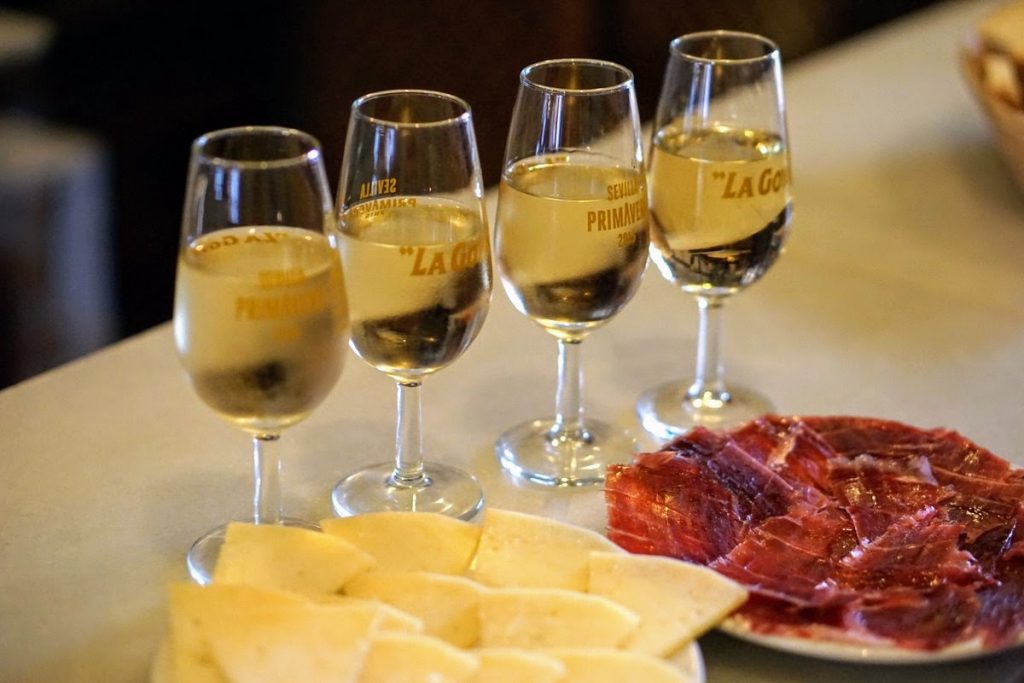People gravitate to the southern Andalusian town of Jerez de la Frontera for many reasons: to see the annual grand prix motorcycle race and Formula One; to partake in the Feria de Jerez during Semana Santa, or Holy Week; or to see a unique breed of horse that comes from the area, the Cathusian breed, at the Royal Andalusian School of Equestrian Art.
But, really, let’s face it, the overwhelming attraction in Jerez is one thing: sherry. Jerez is home to a majority of the planet’s sherry distilleries.
This is why you come to Jerez. The other things—the horses and racecars and Michelin-starred restaurants—are really just a bonus.
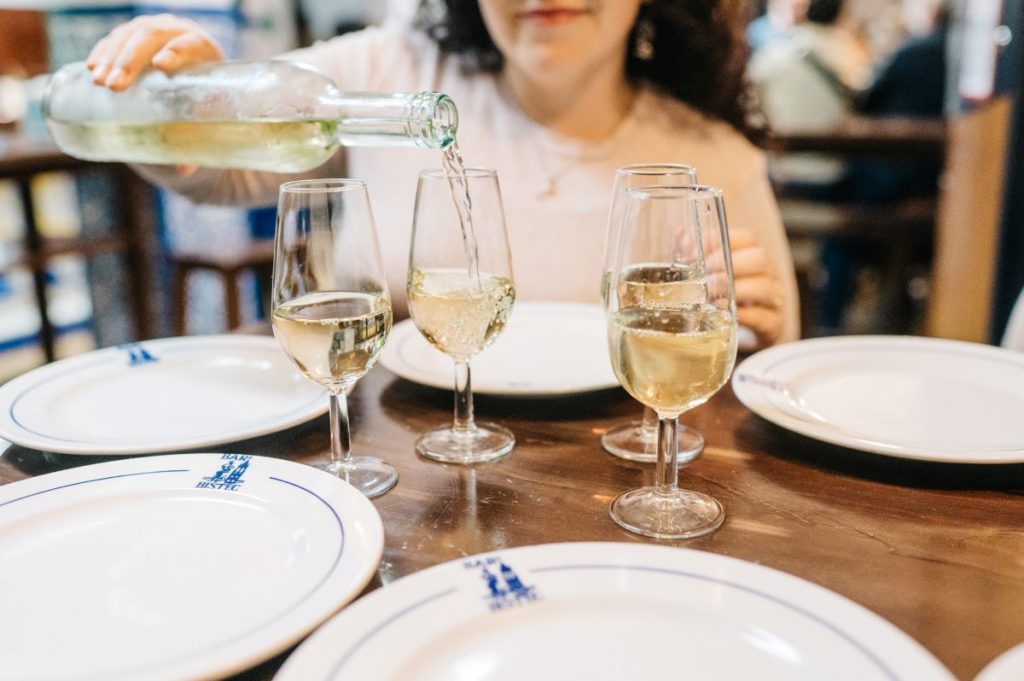
Where to drink sherry in Jerez
During your bodega or winery visits in Jerez, don’t expect to go traipsing through vineyard-blanketed fields. Most bodegas in Jerez are in the center of town. Instead, you’ll be lingering in centuries-old, high-ceilinged store-houses, lined with oak barrels everywhere. You’ll learn in great detail how sherry is made, why it’s stored the way it is, and for how long it is aged.
You’ll also learn about esoteric chalk markings on the cask barrels. Hint: it involves an old, complex, and intriguing classification system.
There are about a dozen bodegas in Jerez that do tours. The below wineries are your best bet to have a superior sherry experience.
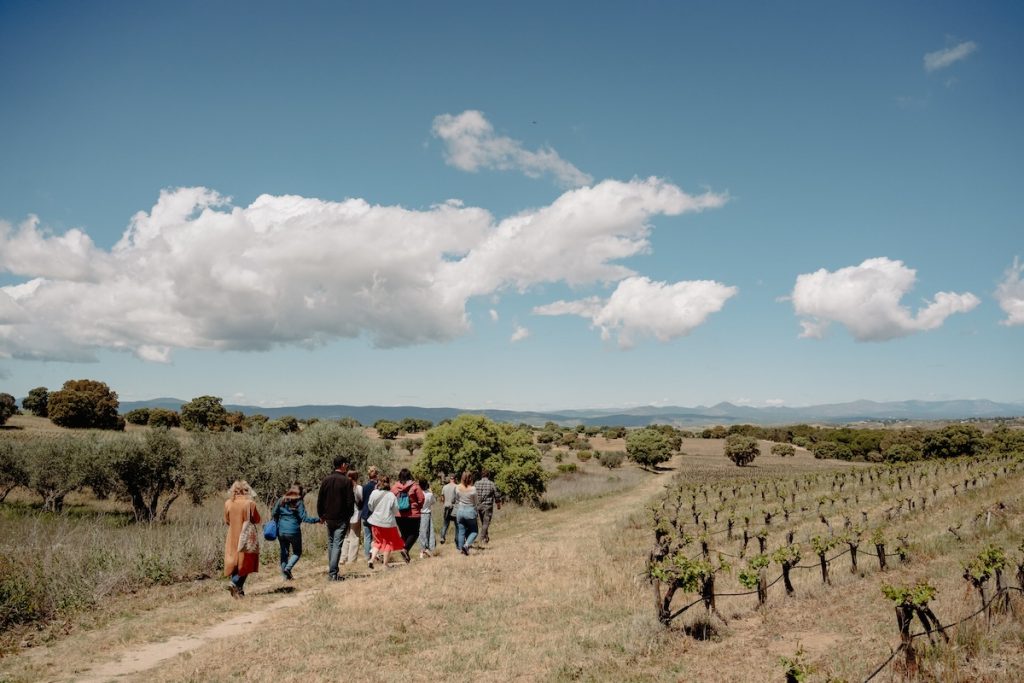
Bodegas Tradición
There is more than one great reason to visit Bodegas Tradición in Jerez: its sherries are aged from 20 to 30 years, so you’re really getting a taste of the past.
But the bodega also displays a major-art-museum-worthy collection of art from the 14th to the 19th centuries, including works by Goya, El Greco, and Velázquez. The tours last about 90 minutes and include a tasting. Be sure to book in advance.
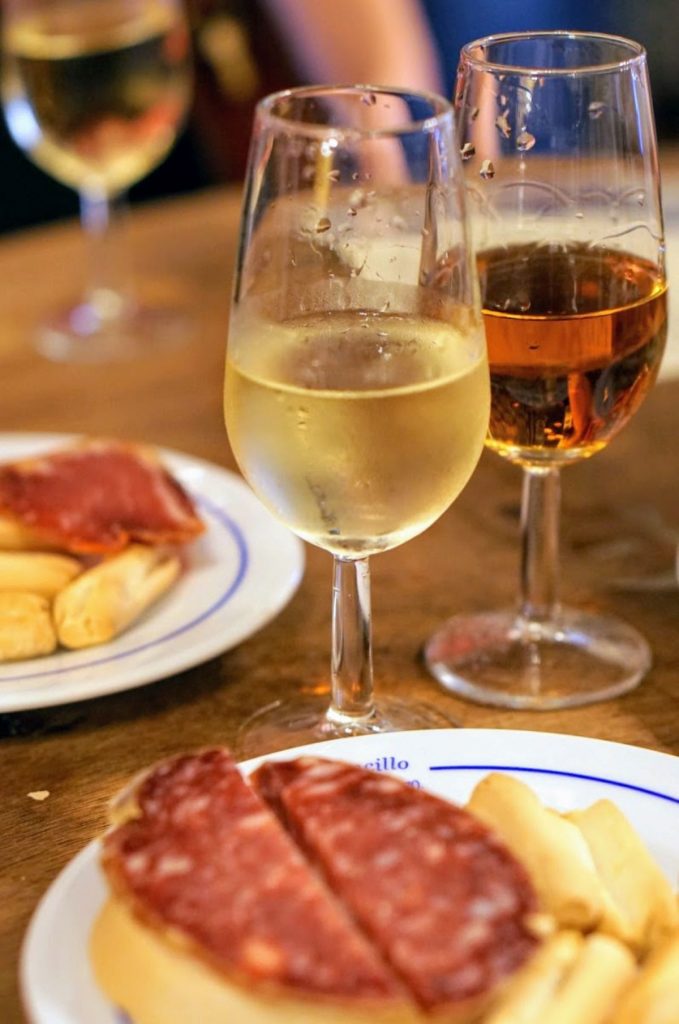
Bodegas González-Byass
This family-run winery has been producing high-quality sherry since 1835. Bodegas González-Byass is better known outside of Jerez for the brand of sherry they famously make: Tio Pepe.
There are several types of tours you can take here—visits that include sherry tastings, of course, but also tours that include tapas and premium sherry sips.
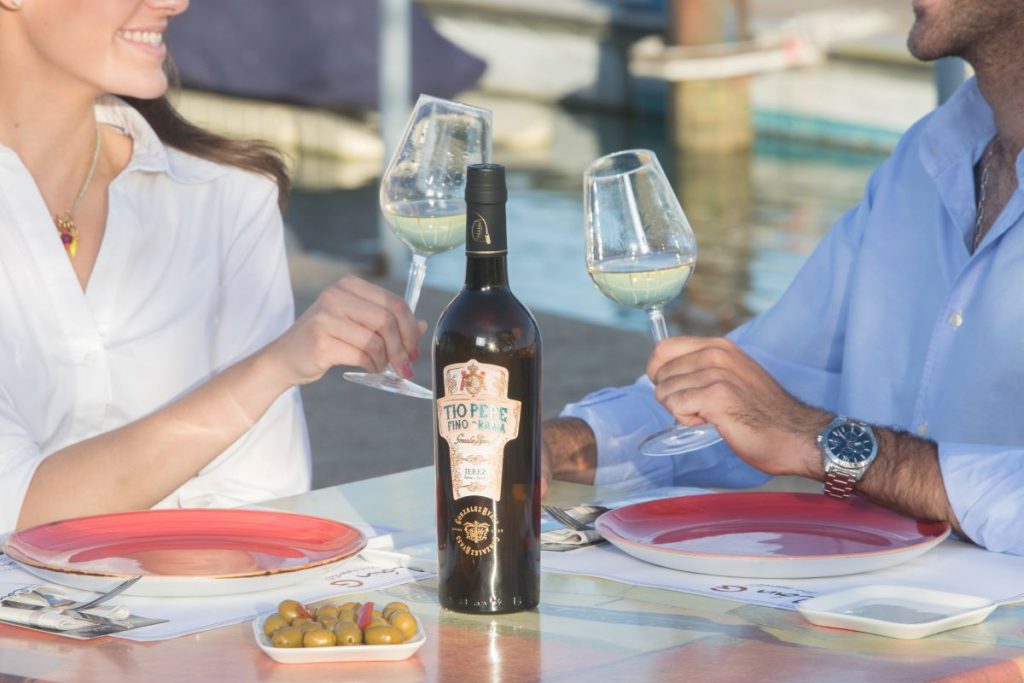
Bodegas Lustau
Since the late 19th century, Lustau has been producing excellent sherry.
Here on the vine-shaded courtyards and inside the barrel-stacked warehouses of the winery, you can opt for two types of visits: a shorter one that includes 5 different wines plus vermouth or a longer tour that includes 7 wines and two vermouths.
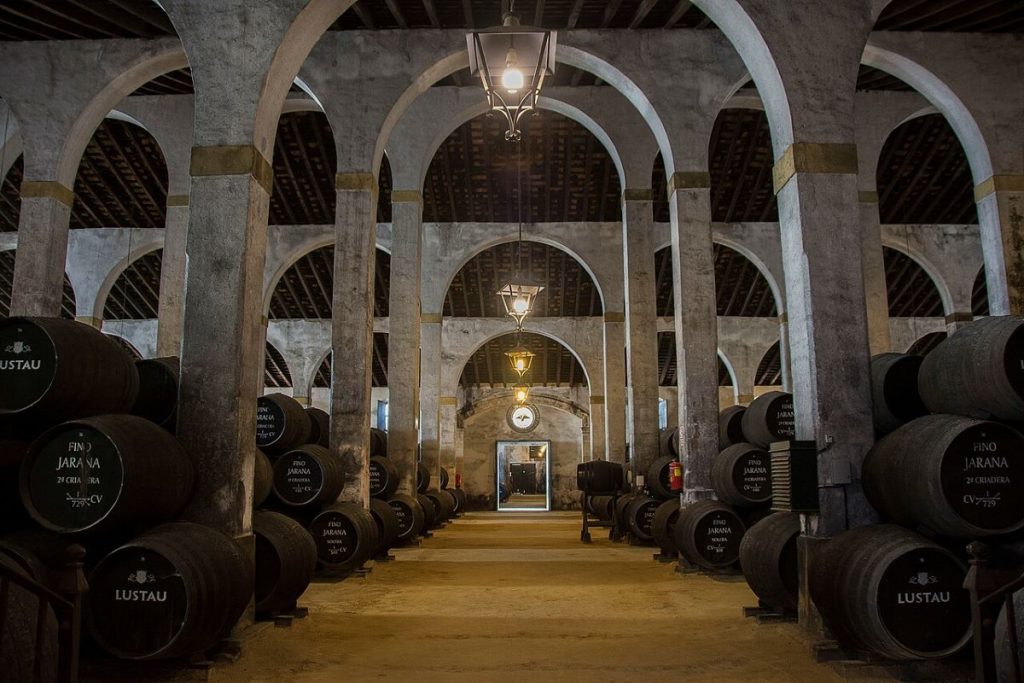
Emilio Hidalgo
The bodega Emilio Hidalgo has been producing high-quality sherry since 1874. The 19th-century complex, complete with high-ceilings and large windows, makes for a fun tour.
Today you can acquire bottles of this fine sherry all over the world but the best place to sip it is right in Jerez.
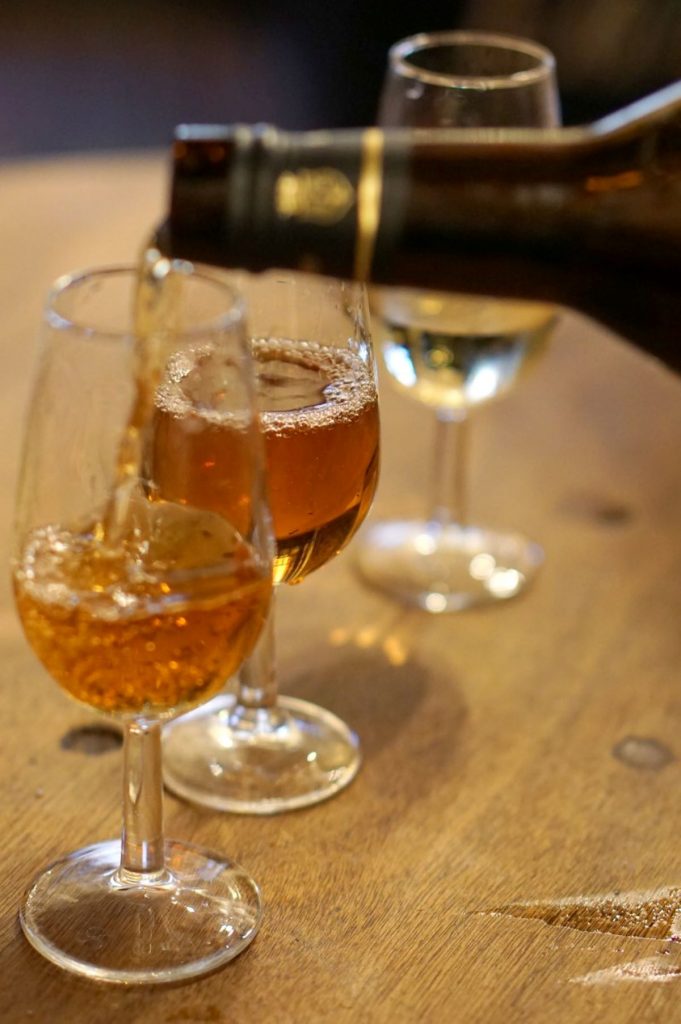
Bodegas Fundador
You can take a guided stroll around this ancient winery, learning about the history of Fundador, and then finish off your time here with a sampling of some premium varieties of sherry that they produce here.
The company was founded way back in 1730 by an Irishman, so there’s a lot to take in here—both history and sherry.

Where did sherry come from?
Viniculture, or the production of wine, has been happening in Jerez since the Phoenicians introduced it to the Iberian peninsula in 1100 B.C. About 900 years later, the Romans came and continued the tradition of making wine in and around Jerez.
When the Arabs took over a vast swath of Iberia, including Andalusia, they introduced the region to the process of making fortified wines. And sherry was born.
Enter the British:
- Great Britain became a huge market for sherry consumption. So much so that several wealthy British families ended up opening their own sherry cellars and bodegas (or wineries) in Jerez. Don’t be surprised to see a lot of English place names and company names while in Jerez, as well as in the nearby sherry-making towns of Puerto de Santa Maria and Sanlùcar de Barrameda.
- In fact, Sir Francis Drake is credited with making sherry popular in England in the 16th century after raiding several sherry bodegas in Jerez. A century earlier, Christopher Columbus sailed across the Atlantic Ocean with bottles of sherry on his ships. Even Shakespeare, the great bard, has mentioned sherry in his stories.
The name “sherry” is derived from the Spanish monicker for the libation, “Xérès,” or Jerez, and was one time referred to as “sack,” which comes from the Spanish word “saca,” or “extraction” in English, because the barreled wine was sometimes “extracted” as part of the process of blending it.
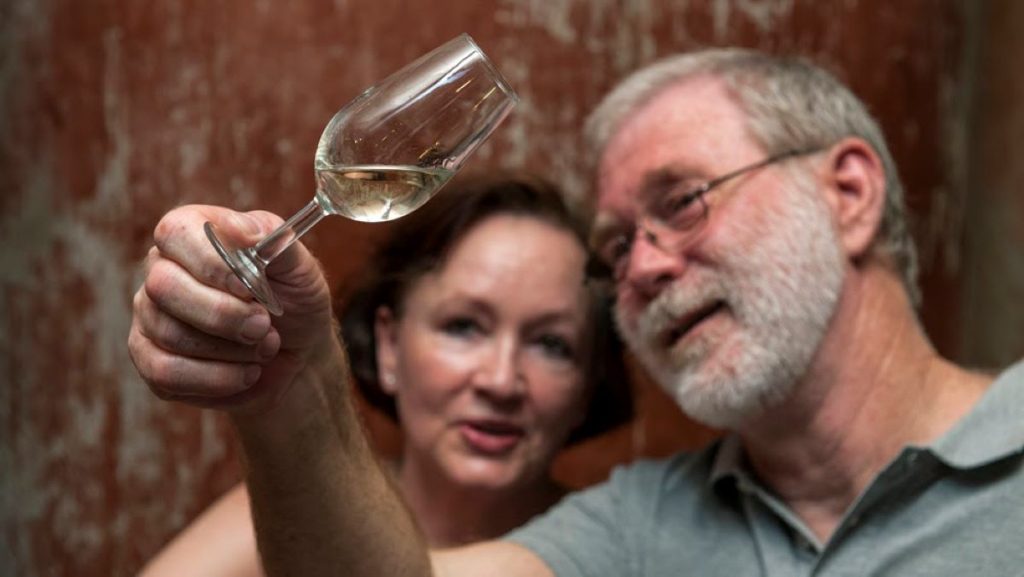
What is sherry?
Sherry is a fortified wine made from white grapes that the Arabs first introduced to the Iberian peninsula.
It is usually made from the Palomino Fino grape and has a variety of styles and tastes—everything from very sweet to bone dry, young to cask aged—and it is often blended using the solera system which means regularly adding younger wine to an aging cask barrel (and the other way around).
This helps create a more complex taste in the sherry while at the same time keeping it bright and fresh and more balanced.
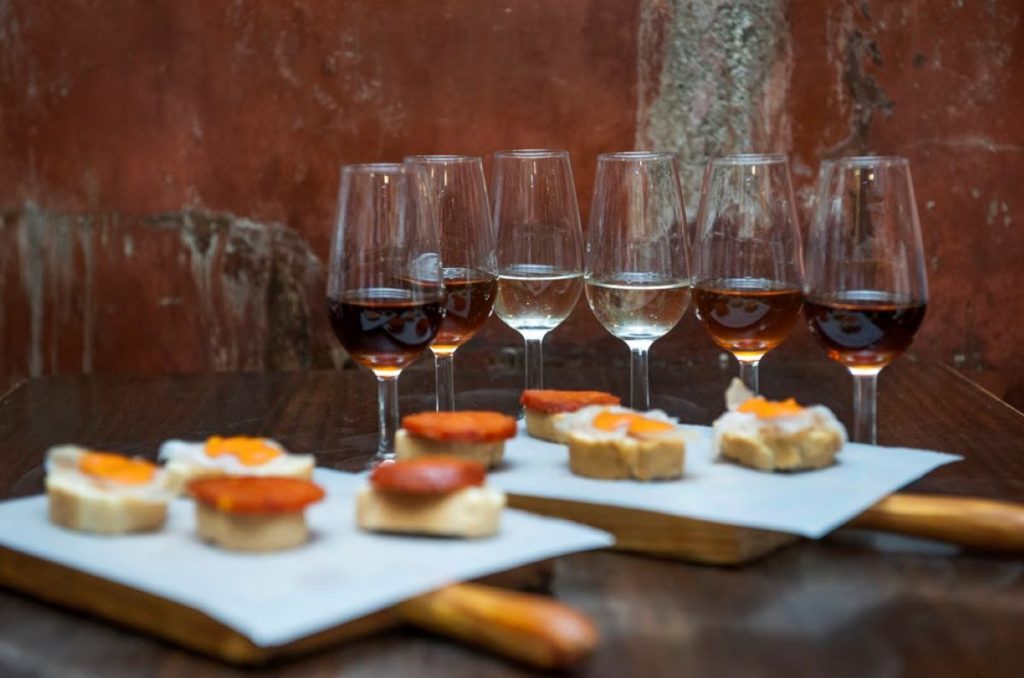
How is sherry made?
After the magic of turning grape juice into an alcoholic libation in stainless steel tanks, otherwise known as fermentation, the fortification process starts by adding a grape-based spirit and continues to fortify until the wine reaches an alcohol level of about 15%.
Since the wines are fermented first and fortified second, the sherry is often dry at first with some sweetness coming later in the process by adding the sweet Moscatel and/or Pedre Ximénez grapes.
But it’s a mistake to think that all sherries are sweet. They’re not. There are many dry varieties too.
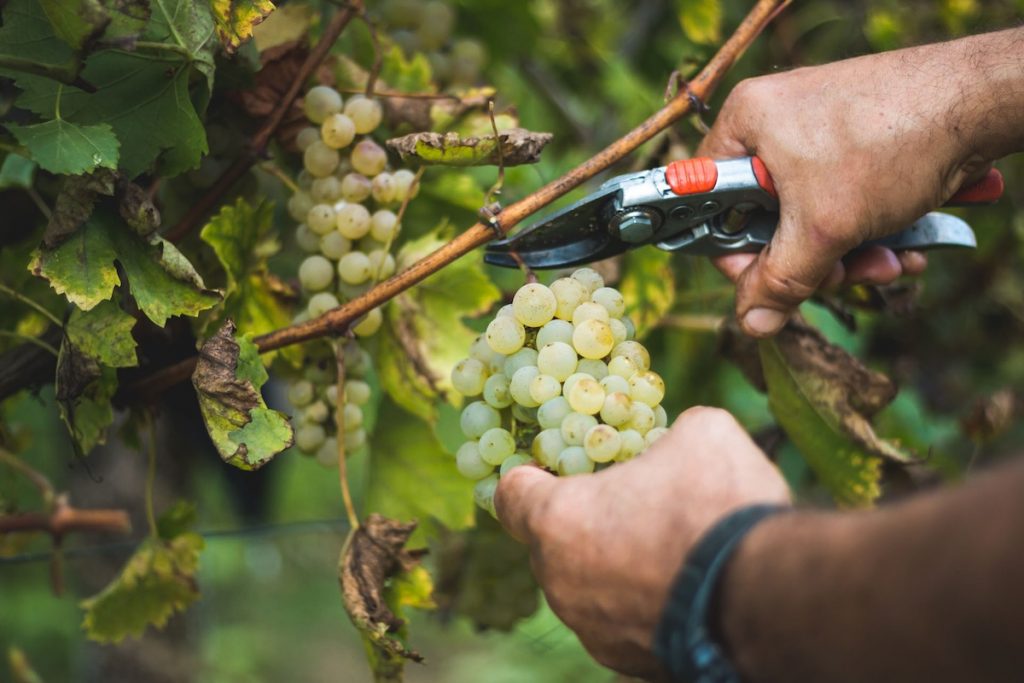
The Solera system
Because of the solera system, in which newer wine is often added to the barrel aged sherry, there is often not a specific vintage or year that is put on the bottle.
The solera system sometimes involves stacking the barrels in a triangular shape, with the oldest on the bottom and newest on top. Wine is taken from the older barrels and added to the ones.
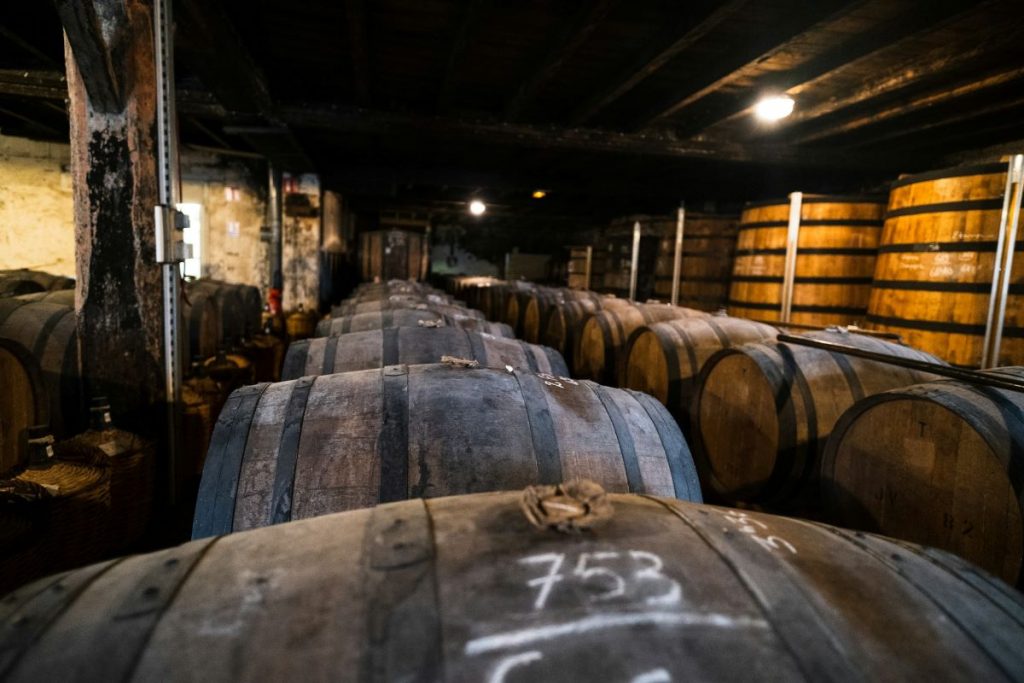
What to eat with sherry
There is a general rule of thumb about pairing food and sherry. It’s that the Manzanilla and fino varieties go best with seafood and fish while oloroso is best paired with pork, lamb, and beef. Of course, there are exceptions to this rule.
If you have a nice bottle of Manzanilla, save it for an evening when you have some very fresh fish, including sushi. For fino, Spanish dishes like patatas bravas, pan tomaca, and tortilla are great. So is anything fried, such as Japanese-style tempura.
Or the oloroso variety, if you’re in Spain, you’re in luck: pork is one of the best ingredients that pairs with it. So, jamon Iberico de bellota, presa, secreto Iberico, lagarto, and many other cuts of pork go very well. Also, lamb and beef, as well as foie gras and heavy stews.
